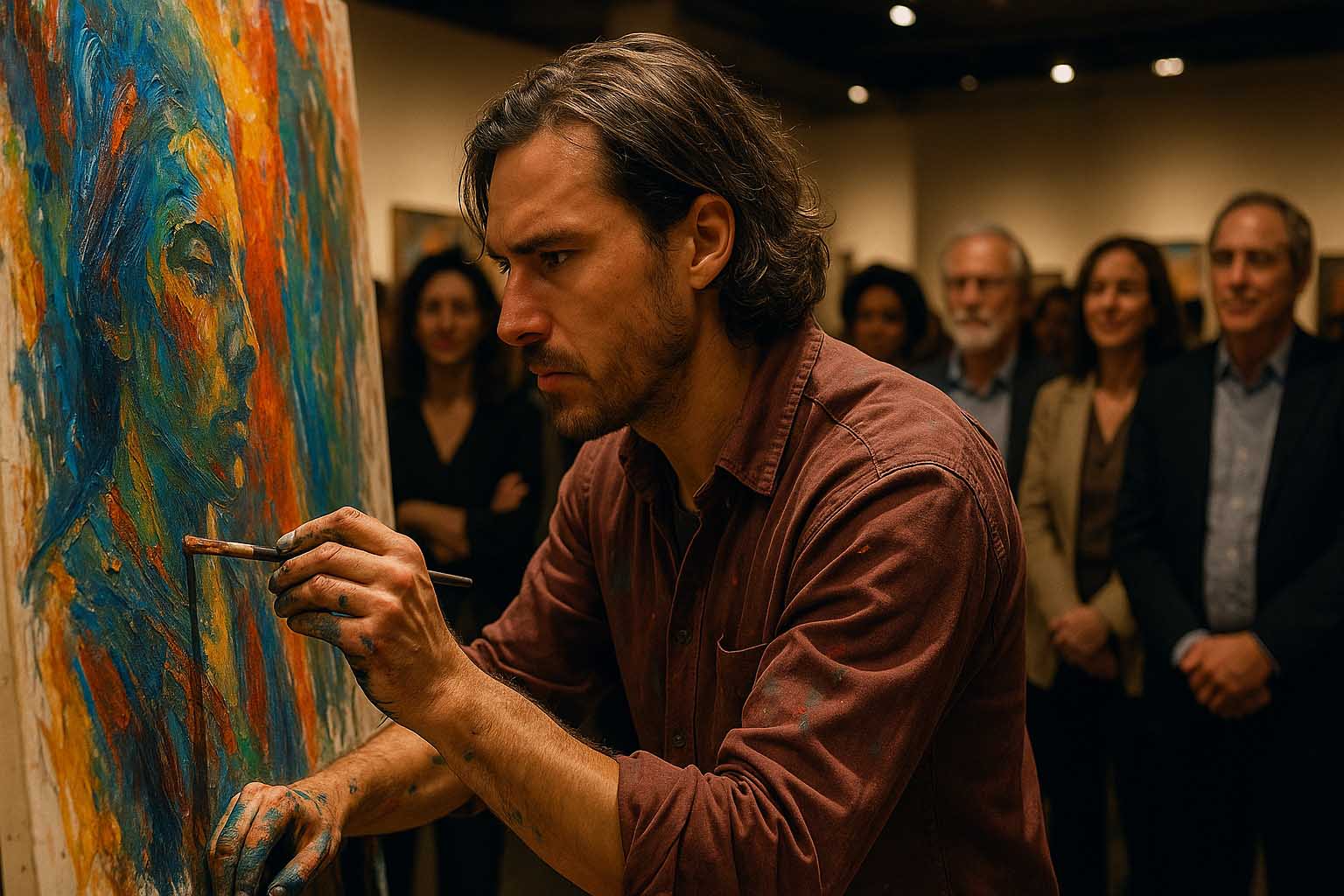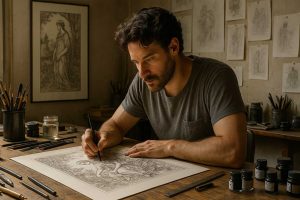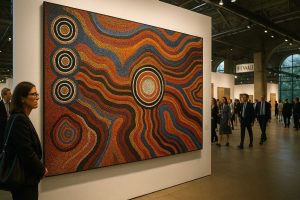
Art After Dusk: Gallery Nights in Marquette and Beyond
The air remains still, yet the energy stirs the streets once the gallery doors swing open. Something electric lingers as people drift from one creative space to another, with live music echoing down the sidewalks and lights flickering like an invitation. For those who love culture and creativity, “Gallery Night” is more than a simple event—it has become an unofficial celebration of local art. One shining example is Marquette, Michigan, where this practice stretches past its shoreline and resonates on a global scale.
- Marquette’s Gallery Night blends regional culture through open exhibitions, music, and live demonstrations.
- Cities like Berlin, London, and Singapore showcase diverse formats—from all-night museums to pop-up installations. These gatherings support restaurants, hotels, and retail shops while spotlighting both local and international artists.
- New technology, inclusive methods, and long-term community partnerships help sustain this thriving late-night art scene.
Connecting People and Culture
One of the main goals of a Gallery Night is to make art feel like a neighbor. Unlike the usual quiet and structured experience in formal museums, these evenings offer a welcoming, collaborative setting. Several countries have proven how effective this model is. In Mexico City, the monthly “Noche de Museos” ties history with modern art. Over in Melbourne, “Art After Hours” happens every Wednesday, allowing guests to enter key galleries for free.
In a similar spirit, the lakeside town of Marquette embraces this practice with enthusiasm. Each year, venues like Zero Degrees Gallery and the Marquette Arts & Culture Center join hands to create walking routes for guests. Visitors can meet painters, view new collections, or sip coffee while street musicians perform nearby. Though smaller than cities like Berlin or Tokyo, Marquette offers a more intimate approach—friendly, close-knit, and surrounded by the natural beauty of Michigan’s Upper Peninsula.
Lighting Up the First Thursday
Marquette’s “First Thursday Art Walk” has become a highly anticipated part of the city calendar. On the first Thursday of every month, galleries offer free or donation-based entry, showcasing fresh collections and hosting live painting sessions. In October 2024, over 150 artists joined the Marquette Art Tour. This self-guided path connected downtown studios, cafés with micro exhibits, and even surprise poetry readings.
The impact was measurable:
- Foot traffic rose by 12% near local dining spots, according to the Downtown Development Authority.
- Retail and art sales during the three-night period reached around $250,000.
- Boutique hotel bookings jumped by 30%, based on tourism office records.
These numbers highlight how creativity can boost a local economy while broadcasting artistic voices far and wide.
Global Inspirations Worth Noting
To see how this idea has evolved elsewhere, consider the standout examples from cities across the globe:
Berlin – Lange Nacht der Museen
A full 24-hour event where museums stay open past midnight. A shuttle network links venues while live performances fill the halls. The most recent edition welcomed nearly 30,000 visitors.
London – West End Gallery Hop
Combining big names like Tate Modern and indie spots in Shoreditch, guests enjoy wine tastings and panel discussions about urban art protection.
Singapore – Art After Dark at Gillman Barracks
With DJ sets, video projections, and rising Southeast Asian talent, this event bridges commercial and experimental pieces in one open-air venue.
Cape Town – First Thursdays
From 6 p.m. to midnight, neighborhoods like Bo-Kaap and Woodstock open in unison. This event highlights the multicultural face of the city and fills its streets with color and life.
Though these cities vary in size and culture, they share three pillars: public access, collaboration with businesses, and strong logistics to ensure safety and flow.
Economic Spark and Social Value
When galleries open just as workdays close, there’s a ripple effect. More demand arises for food stalls, souvenir vendors, and transportation services. The overall nighttime economy benefits. According to Oxford Economics, for every 100 attendees at a late-night art event, roughly 1.3 new jobs may be created in hospitality. This trend played out in Marquette as hotels and eateries reported notable upticks.
But it’s not just about income. Gallery Nights provide face-to-face contact between artists and the public. These shared moments offer relief from screen fatigue and emotional stress. Many organizers now include wellness areas, open sketch walls, and painting zones for children. Such elements promote peace across generations, deepen appreciation for culture, and foster local pride.
Blending Technology with Tradition
In cities like Chicago and Seoul, visitors can scan QR codes beside canvases to view behind-the-scenes videos, read artist statements, or access real-time prices. Amsterdam has tested augmented reality during its events. Through apps, viewers can see virtual animations layered onto real-world paintings. These additions enrich the experience without removing the human aspect of meeting an artist face-to-face.
Creating Safe and Welcoming Spaces
Modern Gallery Nights prioritize safety and inclusion. Clear crowd guidelines, medical assistance points, and accessible pathways are essential. Marquette again leads with its team of volunteer “Art Ambassadors”—students and seniors trained to guide guests, share information, and assist in emergencies. Events here also offer sign language interpretation and tactile tours for the blind. This care and effort reflect the heart of a community-driven event.
Planning a Successful Gallery Night
To keep things smooth and exciting, organizers often focus on a few key areas:
Timely Scheduling
Align dates with nearby festivals to increase outside interest.
Easy Navigation
Use both printed and digital maps, info stations, and directional signs for crowd flow.
Support from Local Shops
Encourage cafés and restaurants to offer themed menus or drink specials.
Promotion Through Storytelling
Hold a photo contest or hashtag campaign to organically boost exposure.
Where It’s Headed
Online galleries continue to grow, but they haven’t replaced the need for real-life experiences. In fact, that desire has only deepened. Seeing brushstrokes up close, smelling fresh paint, and hearing artists speak directly—these moments can’t be matched by pixels alone. The concept is also evolving. Many cities now stream talks online while maintaining physical viewings. Others are testing carbon-neutral lighting and eco-friendly shuttle services. Grants for Indigenous artists have become part of this expanding commitment to equity and sustainability.
A Night Worth Remembering
From the calm winds of Marquette to the lively streets of Berlin, Gallery Night shows that art doesn’t sleep. When artists, visitors, and communities unite under one vision, something beautiful takes shape. The next time you’re invited to such an evening, take that step. The doors will be open. Inside, you’ll find the color, warmth, and connection we all need.

